Guns and America: From Mental Illness to Racial Motivation
“Why does it seem as though so many these days are so quick to shoot?” asked Chancellor Gary May, opening “The Campus Conversation: Guns and America after Parkland” on April 26. “Guns cannot become the norm in American life, which they seem to be doing.”
The panel discussions, which took place in the UC Davis Conference Center, rose out of a desire to address recent incidents of gun violence and the overall issue of guns in America.
Six distinguished faculty members from a wide diversity of disciplines spoke about firearms from the vantage point of their research expertise. Topics ranged from the relationship between mental illness and gun violence to the racially motivated history of guns in America.
Firearm Violence and Mental Illness
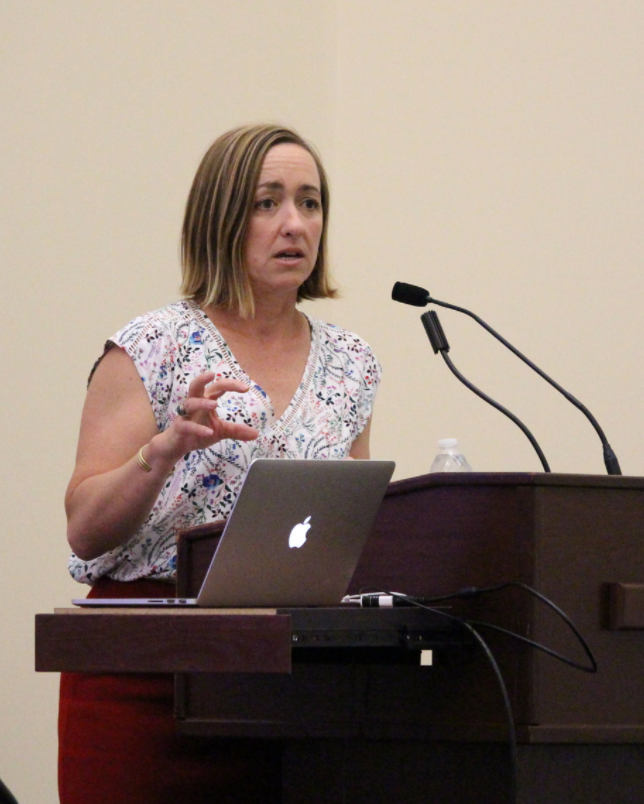
Is reliance on the mental health system really a way to prevent these increasingly frequent and lethal shootings? Amy Barnhorst, a UC Davis Health assistant clinical professor who specializes in psychiatry, began her discussion with this question.
While politicians often cite mental illness as a cause of attacks using guns, Barnhorst revealed that the reality is quite different. For instance, substance abusers pose a significantly higher risk for being violent, and those with mental illness are more likely to be victims than perpetrators.
Even so, according to Barnhorst, many mass shooters have been delusional and could have benefited from psychiatric treatment. However, “this is by far the exception, rather than the rule,” she cautioned.
Barnhorst also pointed out that school shooters tend to suffer from narcissism and entitlement. Barnhorst explained that these shooters—often socially isolated—plan their “revenge” to attract the attention they feel they deserve.
Barnhorst concluded that the mental health system is not a feasible mechanism to prevent future attacks. “There is not a good psychiatric treatment for angry and vengeful young men.”
Firearm Violence: From Science to Prevention
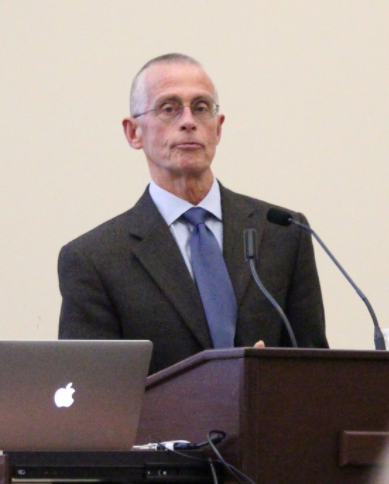
Garen Wintemute, a professor of emergency medicine and director of the UC Davis Violence Prevention Research Program, reminded the audience of the growing need to recognize potential threats and immediately report them to authorities. Together, Wintemute asserted, everyone can prevent these recurrent acts of violence.
Wintemute then declared that mass gun violence has become a public health crisis. “This happens at all the public places we all go; this could happen to me or any of us.” And once shot, two-thirds of gun violence victims die on the spot, regardless of how fast the ambulance gets there or how skilled the trauma surgeons are.
Wintemute touched on America’s response to motor vehicle deaths as one of America’s greatest public health successes of the 20th century. He said the country is “inexcusably failing” to make a similar investment in gun violence prevention.
“We have repeatedly, consciously, and deliberately taken the opposite approach.” Without thorough research on the issue, Wintemute said we will never fully grasp the risk factors of gun violence or possible solutions in halting the epidemic.
Wintemute also stressed the difference in demographics between those at risk for firearm homicide, largely young men of color, and those in power to make decisions about resource allocation. Often, Wintemute explained, policymakers are too detached from the problem and the populations at risk to properly allocate resources to those who need it.
The Second Amendment
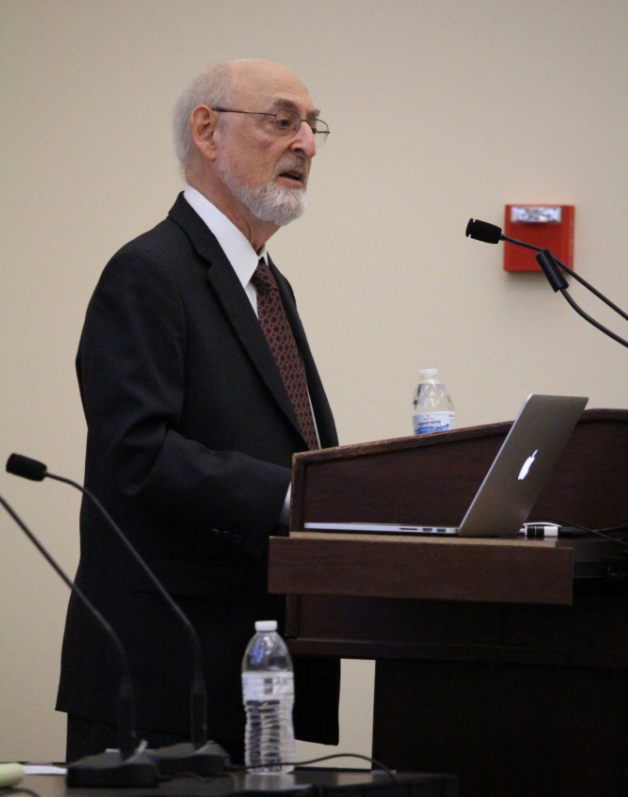
UC Davis School of Law Professor Alan Brownstein regards the Second Amendment’s place in American society today as fostering “constitutional chaos.”
Though it has always been the rallying cry of gun proponents, the doctrine has limitations, Brownstein said. For example, especially dangerous weapons can be prohibited, and many proposed restrictions on keeping and bearing arms are indeed constitutionally valid.
“The Second Amendment is not unlimited, and not a right to keep and carry any weapon whatsoever,” Brownstein affirmed.
He said the courts have been struggling with questions such as “What is the nature and scope of the right to bear arms?” and “What is a constitutional infringement of this right?” Both questions are largely unanswered.
As a result, he concluded most gun restrictions are rejected and judicial rulings are increasingly inconsistent. He considers the lack of clarity a failure in political decision-making and until resolved, courts will “continue making assumptions on the basis of unanswered questions.”
Social Networking and Threatening Students
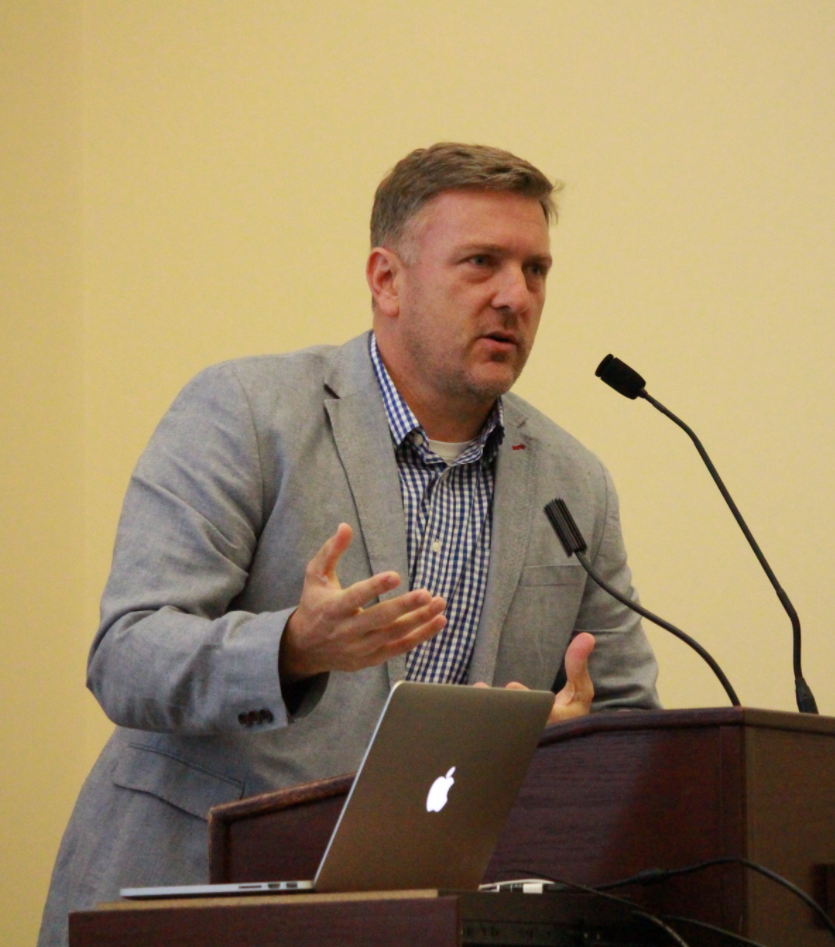
"Not only are fires often invisible to us, but our best fire alarms are not detecting the smoke,” said Bob Faris, associate professor of sociology.
Faris, who studies teen social conflict and social networks, recently surveyed more than 7,000 teenagers about how often they received or made threats of violence with guns or other weapons.
The initial results showed weapon-related threats were primarily made by male students and increased as the students moved through high school.
For 15 years, Faris has collected data from over 8,000 teenagers as they progressed from sixth grade through high school, analyzing their social networks to study bullying, drinking, drug use and dating violence.
In the weapons survey, threatening students were found in the center of social networks just as commonly as the periphery; there was no clear pattern in social status, and the friendships of students making the threats changed radically at different points in time over the school year.
Faris concluded the strongest predictor of threatening behavior is friendship instability, and high friendship turnover for threatening students makes potential acts of violence harder to detect.
The (Unsurprisingly) Racist History of Gun Violence
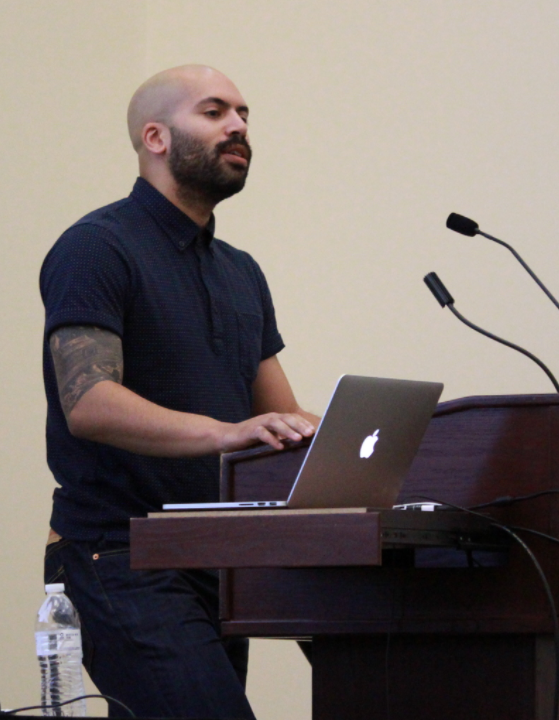
Justin LeRoy, an assistant professor of history, began by discussing the July 2016 shooting death of Philando Castile near St. Paul, Minnesota. Castile was shot by a police officer who said he believed Castile was reaching for a gun. In reality, Castile was reaching for the driver’s license and car registration in his wallet. Though Castile legally owned a firearm and alerted the officer, possessing the gun made him more vulnerable to violence than protecting himself against it, LeRoy said. A “good guy with a gun” versus a “bad guy with a gun” often falls along racial lines, he explained.
According to LeRoy, the association between blackness and criminality has been around since the colonial era. “Gun ownership and gun regulation has always been tied to white supremacy, hierarchy, and racial control and criminality.”
In colonial America, every free black person was denied the right to bear arms. Ever since then, gun ownership has been linked to slavery, dominance, and radicalized threats. LeRoy said that early white Americans’ fear of tyranny and invasion has been channeled through this racial component; linking to a fear of immigrants, the establishment of the Ku Klux Klan, and more.
“Gun ownership is, and always has been, justified through this sense of racial threat and a fear of black people.”
Guns and Conspiracy Theories
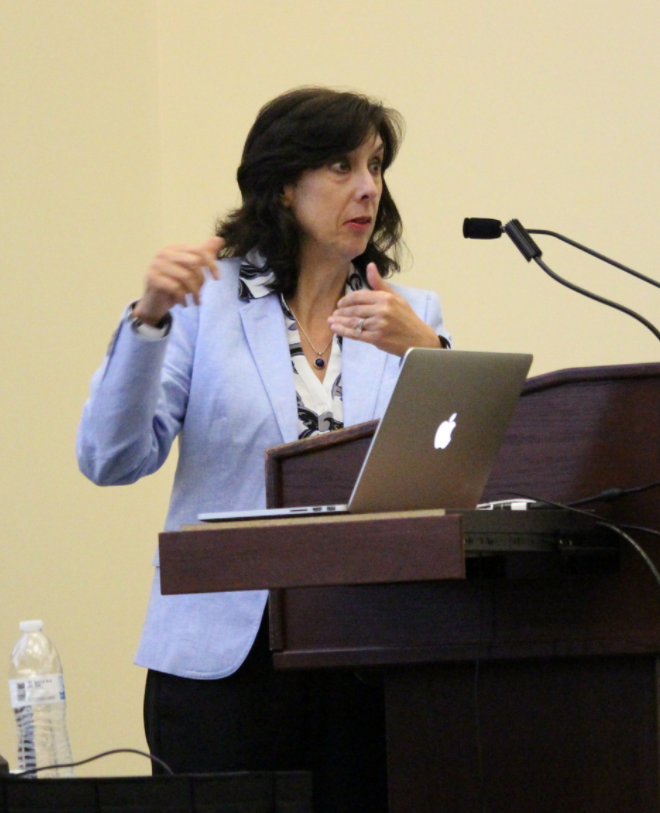
The National Rifle Association (NRA) has not always been the organization we know today that is vehemently opposed to any type of gun regulation. Gun owners’ main argument against gun control has not always centered on the need to protect themselves from their own government, either. Kathryn Olmsted, a professor in the Department of History, said that conspiracy theories underlie this shift in the outlook of pro-gun Americans.
Prior to the 1970s, the NRA was an organization focused on hunting and competitive shooting, and gun owners’ argument relied simply on the need to protect themselves from criminals.
In the 1990s, however, many gun owners adopted a dramatically different message: The government was going to take away guns to subvert citizens. Events such as the 1992 FBI shootout with white separatist Randy Weaver in Idaho, or the 1993 Waco siege of the Branch Davidian sect’s compound in Texas, further led conspiracy theorists to believe in a government plot to disarm Americans and allow the United Nations to take over. These conspiracies spread like wildfire across the right-wing media, Olmsted said.
The past five years have yielded another twist in gun conspiracy theories, Olmsted added. Not only is the government involved in a plot to disarm Americans, but they are doing so by staging mass shootings complete with crisis actors. Many believe that survivor David Hogg of the recent Parkland, Florida, high school shooting is one of them because his father is a retired FBI agent.
Overall, Olmsted said that conspiracy theorists’ paranoia stems from the belief that their own American identity and their own independence is under assault. This “fundamentally un-American” suspicion is what fuels Americans’ blame and fear of the very government they elect.
— Maddy Shiber, writing intern in the UC Davis College of Letters and Science
